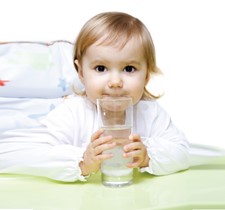What is the future for sperm?

The male sperm count seems to be falling rapidly worldwide but new treatments mean babies are still possible for all but the most sperm-deprived men, writes fertility expert Dr Richard Fisher.
When it comes to reproduction, men are indispensable. Despite all of their apparent or perceived failings, they still remain the only source of sperm available for conception. It may be that in the future, it will be possible to create sperm-like cells from other tissues, but it is really unlikely that men will lose their significant and shared role in natural procreation.
Across the world, sperm counts have been shown to be falling. A recent study by Fertility Associates showed New Zealand sperm donors have almost halved their concentration of sperm over a 20-year period.
Although currently there is no evidence that this is interfering with conception rates overall, it is certainly a worrying trend and the search is on for potential environmental causes. Although the presence of estrogens in the environment is a front-runner in the current debate, there will be other causes as yet undiscovered or unimagined.
Sperm quality
It takes around 90 days from the very beginning of sperm production until ejaculation. Anything that happens during this time can affect both the concentration and function of those sperm. We know that significant illness (even passing flu-like illnesses) can affect sperm production. More important are the continuing background contributions of ill health, which are neither predictable nor controllable.
Being overweight has been shown to have clear correlations with outcome. The heavier men are, the longer it takes their partners to conceive. Cigarettes and excess alcohol are both known to affect sperm counts and subsequent fertility. Neither of these should be considered contraceptives however, as there are still plenty of obese, smoking and alcoholic men who turn into fathers!
Age too has an effect on the chance of conception. Studies have shown that fit and healthy men who are over 40 have partners who conceive at a slower rate than younger men's partners. If the male partner is above 50, a young woman may have half the chance of conception each month than she would with a younger man.
We know that the chance of a woman having a baby with a chromosome abnormality increases as her oocytes (eggs) age. The same can't be said of men, although things like autism and schizophrenia are associated with increased paternal age. I would stress these risks are still quite low, but as a multiple of the norm they are significantly increased.
It has always been said that maternal age is the prime determinate of conception rates and this remains true, however the influence of paternal age is becoming clearer. The truth about reproduction for both genders is clear. If conception is the name of the game, then you should have as your partner, someone as young as you can find!
Treatment options
As our society continues to move to later parenthood, either by accident or design, the combined effect of advancing maternal and paternal age means many more people seek help to have babies.
Most women choose men who are older. As maternal age rises, so naturally does paternal age and the combination adds uncertainty to outcome.
Most men, no matter what age, will of course be able to father children. But we will see more men seeking fertility help as the average age of fatherhood rises.
Men are unreliable at the best of times, but they are particularly unreliable when it comes to producing sperm consistently over time.
Serial semen analyses vary enormously and a single abnormal count is not necessarily important. Sperm concentration, motility (whether they move or not) and morphology (what they look like) can all vary significantly from sample to sample. In men with abnormal results, various, more sophisticated tests are becoming available, which try to make an assessment of sperm function and even long-term outcome. The way DNA is packaged in the sperm head can give a pointer toward not only the likelihood of future fertilisation but also embryo growth, implantation, and successful outcome of a pregnancy.
The use of antioxidants to improve sperm health has received plenty of attention recently. Current opinion is that this may help men with significant sperm defects. But it is unlikely to make any difference to most men with normal sperm counts.
The investigation and potential treatment of male subfertility means that it is rare these days for donor insemination to be the only treatment option available. Natural conception requires around 20-40 million sperm to be deposited in the vagina. But if it is possible to recruit around 1 million sperm from an ejaculate, intrauterine insemination, after careful identification of ovulation, might give a similar result.
Even men with very few sperm in their ejaculate, or none where sperm can be found at testicular biopsy, can now attempt conception using the process of intracytoplasmic sperm injection (ISCI) in combination with IVF. ISCI is a process where individual sperm are collected and with a very fine needle under high magnification, are injected into the egg. Pregnancy rates are as good or better than any other indication for IVF. Sperm used in combination with ISCI does not need to be mature, so whether it comes from the ejaculate or from the epididymis (the collecting ducts around the testis) or from the testis itself, does not matter. There are very few men in whom sperm cannot be found within the testis, even if there is none in the ejaculate.
Future proofing
The sad reality is that as relationships fall apart and new ones are forged, post-vasectomy-induced subfertility is becoming more common.
Although we have reason to feel proud of the rate of vasectomy for birth control in New Zealand, and lead the world in male-based permanent contraception, we will live to regret this if more care is not taken over the original decision.
A vasectomy should be considered an irreversible procedure (although in good hands and providing the vasectomy is not performed too long before, a vasectomy can sometimes be reversed). Men seeking a vasectomy need to consider carefully whether their future might involve another partner and whether they may wish to have a child. The outcome for a reversal differs enormously according to the technique used and the length of time between a vasectomy and a reversal. Just as important however, is the partner's age and very careful thought needs to be given to whether IVF with its defined chance of success, might be a better choice than a vasectomy reversal.
Fortunately long-term storage of sperm has been possible for many years. Men undergoing a vasectomy might consider sperm storage, but most importantly men about to undergo treatment for cancer, which might threaten their fertility, should always consider storage until the outcome of their treatment is known. Sperm storage before treatment for testicular cancer in young men is now almost universal in cities where storage facilities are easily available. Men in smaller places still appear to miss out, just because it is not top of mind for their carers and access is not so easy.
Men who have no sperm or who have tried IVF and ISCI without success, may need to consider the use of donor sperm. This is often a very satisfactory way for the couple to create a family of their own. Reaching the decision to proceed with donor sperm is never easy, but the social outcome for children compares favourably with naturally conceived families.
Magazines often publicise the use of donor eggs, but stories about outcomes for donor sperm are less common, consequently recruiting sperm donors has become more difficult than recruiting egg donors. (I think this primarily reflects the innate altruism of women, rather than the reluctance of men). Clearly both are gifts greatly valued by the recipients and they can be life-changing.
So what simple messages are there about sperm and the management of infertility? Stay healthy, keep your weight within a normal range, keep alcohol consumption as low as you reasonably can and do not smoke. For most men this will maximise their chance of conception and perhaps more importantly, maximise the chance of having a healthy child. The best gift you can give to your children is a healthy start to life, which in turn begins with healthy eggs and healthy sperm.
Dr Richard Fisher (CNZM, FRCOG, FRANZCOG, CREI) is Adjunct Professor in the Liggins Institute. He co-founded Fertility Associates in 1987 and is now New Zealand's foremost spokesperson on infertility issues. In 2009 he was made a Companion of the NZ Order of Merit. For more information on fertility issues go to www.fertilityassociates.co.nz.

AS FEATURED IN ISSUE 19 OF OHbaby! MAGAZINE. CHECK OUT OTHER ARTICLES IN THIS ISSUE BELOW

















